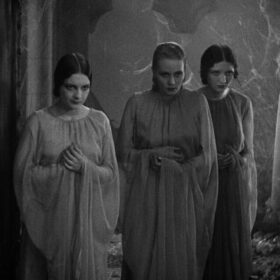Fall of Delta Green
Development Diary: The Fall of DELTA GREEN
 by Kenneth Hite
by Kenneth Hite
For the last 20 years, I have considered the Delta Green setting—created by John Scott Tynes, Adam Scott Glancy, and Dennis Detwiller—the pinnacle of the possible for Cthulhu campaigning. Like my own Trail of Cthulhu, published by Pelgrane Press for its GUMSHOE system in 2008, Delta Green was licensed for Chaosium’s Call of Cthulhu RPG. It presented a secret war within the federal government, an illegal conspiracy of G-men dedicated to destroying the Cthulhu mythos. It gave its heroes assault rifles and CIA cover—which somehow only made their situation worse, made their investigations bleaker and more horrific.
According to Lovecraft’s story “The Shadow Over Innsmouth,” government agents had raided that decrepit town, discovered the hideous Deep Ones lurking therein, and even attacked them with submarines. Tynes and company proposed that the raid and cover-up mentioned by Lovecraft spawned a secret government program—codenamed DELTA GREEN—that fought occult Nazis, hunted Cthulhu cultists, and eventually destroyed itself in Vietnam.
Officially disbanded in 1970 after the failed “Operation OBSIDIAN” in Cambodia, the program continued as an illegal “cowboy” operation until it was re-activated after 9/11. Just as DELTA GREEN revived in the new century, the Delta Green partnership and Arc Dream Publishing produced their own core Delta Green: The Role-Playing Game books this year. Those books bring the DELTA GREEN story up through the War on Terror, the surveillance state, and the rest of the present day’s horrors.
Over breakfast at Gen Con 2015, Dennis and Scott revealed their plans for this new RPG and invited me and Pelgrane aboard. Trail of Cthulhu had made its own waves in the Cthulhu world, and adding a GUMSHOE system Delta Green corebook would bring two fan bases along for the ride. None of us wanted just a simple translation, needlessly duplicating material. Trail of Cthulhu had shifted its default setting from Chaosium’s 1920s to the darker decade of the 1930s, which perhaps inspired Dennis and Scott to offer me a different decade than the original’s 1990s or the new edition’s now. We settled on the 1960s, the decade in which, like many well-meaning government programs, DELTA GREEN overreached and destroyed itself. By contrast with the “summer” of the 1940s and 1950s, and to foreshadow the program’s destruction, I named this new corebook The Fall of DELTA GREEN.
The result was a double translation: not just from the Delta Green: The RPG system to GUMSHOE, but from the modern day to the 1960s. I loaded up my iTunes playlist with everything from Bob Dylan and the Beach Boys to period Japanese and Cambodian pub rock, and tried to sink into the era. I hunted through 1969 geology textbooks for signs of sunken R’lyeh. I read sixties spy novels and nonfiction (especially the pioneering 1967 work The American Intelligence Community by USAF Brigadier General Monro MacCloskey) to build a sense of the “past possible.” In many ways, a world without the Internet or micro-transmitters becomes better for investigative games and spy fiction than ours: knowledge is once more valuable, and uncertainty lets horror grow.
Not that there was any shortage of horror in the modern day Delta Green: The RPG. Lead designer Greg Stolze introduced several systems designed to grind the heroes down: Lethality, Bonds, and Breaking Points. Lethality was just what it sounded like: some weapons killed you outright if you rolled lower than their Lethality percentage. On the one-die GUMSHOE system, Lethality became even more lethal, since the lowest possible Lethality percentage was 1 in 6, or about 17%. I put in a little wiggle room (some Lethality just left you crippled or stunned) but not too much: The Fall of DELTA GREEN also encompasses the Vietnam War, after all.
Breaking Points, fortunately, already replicated the staccato feel of disintegration I’d added to the Sanity and Stability tracks in Trail of Cthulhu. But Bonds were real evil genius. On the surface, they looked like lifelines: human ties the agent could call on to preserve her sanity. But once used, their disintegration added stress to the agent’s off-hours: explain why you missed your son’s birthday to chase UFOs. It took a good bit of tweaking the specific Stability mix to get Greg’s vision working in the GUMSHOE engine, but again, my version might even have wound up a little harsher. The monsters became tougher, too, up-armored from their Trail of Cthulhu incarnations for a new era of M16s and flamethrowers. And of course, I borrowed heavily from the extensive Delta Green discussion of hiding or destroying a corpse.
As with my other GUMSHOE designs, I added modes of play, allowing the Handler (the GM) to ease up or bear down on the agents, in this case by adding or removing Stability from the game economy. Following Greg’s skill consolidation, agents can focus more points on investigating human targets either socially or by stealth; I added the Agency ability to increase that flexibility further. But like Bonds, these seeming bonuses just push players further down the slippery slope to destruction. The Fall of DELTA GREEN, while almost entirely inter-operable with other GUMSHOE games like Trail of Cthulhu and Night’s Black Agents, is its own rough beast: gritty and horrifying, with plenty of sharp edges for agents at the sharp end.



 by Kenneth Hite
by Kenneth Hite